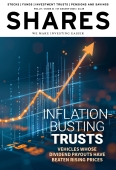Archived article
Please note that tax, investment, pension and ISA rules can change and the information and any views contained in this article may now be inaccurate.
Does it matter when I take my 25% tax-free allowance?

My question is about taking 25% tax free cash if you have a number of pension pots and if there are any time constraints.
In my case, I took early retirement after April 2006 and 25% of my defined benefit pension fund, over £100,000 tax free. I have a SIPP with value of £160,000 and I need to decide if I can or able to take 25% tax free before I am 75 in March 2026.
David
Rachel Vahey, AJ Bell Head of Public Policy, says:
The pensions tax system has undergone significant change in the last two decades.
First, on 6 April 2006, the tax regimes for occupational pensions and personal pensions were merged creating one set of pension rules.
This was called ‘A-day’, and led to the creation of the lifetime allowance which is a limit on the tax-efficient amount you can take out of a pension.
When it was first introduced, it was set at £1.5 million, but after several changes it now stands at £1,073,100.
The annual allowance was also created under this new regime. This is the tax-efficient limit for the contributions someone can pay into a pension, including their own contributions, their employer’s and tax relief.
This was initially set at £215,000, and again after several changes it is now set at £60,000.
Two other (lower) annual allowances have also been introduced, one for very high earners and one for those who ‘flexibly’ access their pension, including taking drawdown.
The second regime change happened last year, when the lifetime allowance was abolished in April 2024 and replaced with two main new limits.
The lump sum allowance (LSA) measures the tax-free lump sums someone can take in their lifetime and is usually set at £268,275.
The lump sum and death benefit allowance (LSDBA) measures the tax-free lump sums someone takes over their lifetime as well as the ones their beneficiaries receive on their death, and is usually set at £1,073,100.
Changing the rules for pensions often results in complications, especially for those who access their pensions under different regimes as you have done.
The new rules calculate how much LSA you have left, taking into account what you previously took from your defined benefit scheme.
You need to have enough remaining LSA to make sure you can take the whole £40,000 (25% of £160,000) tax free from your SIPP, otherwise the excess will be taxed as income.
As you took your tax-free lump sum from your defined benefit pension after 6 April 2006, your remaining LSA is worked out by taking 25% of the lifetime allowance you had used at 5 April 2024 and deducting this from the lump sum allowance.
So, for example, if you had used up 30% of your lifetime allowance by 5 April 2024, then the LSA you have left will be: £268,275 – (25% of 30% of £1,073,100) = £268,275 - £80,482.50 = £187,792.50
You should have enough lump sum allowance to take your whole tax-free lump sum from your SIPP, but you may want to get in touch with a financial adviser who can let you know exactly what your position is.
It’s also worth noting that had you taken your tax-free cash before April 2006 (and not taken any other benefits since then) you would need to work out your remaining LSA using a different calculation.
There is no time limit on when you have to take your tax-free lump sum, so you can take it after you reach age 75 if you want.
However, a word of caution – if you die after the age of 75 then your beneficiaries may have to pay income tax on the amount they inherit, regardless of whether you had a tax-free amount remaining.
For that reason, it may make sense to take your tax-free amount before you reach age 75 or the tax-free element of it could be lost.
This may be even more relevant if you think inheritance tax (IHT) will apply to your unused pension on death after April 2027.
In that case your beneficiaries may have to pay IHT at 40% and then income tax on some of the unused amount they inherit.
This could mean a combined effective tax rate of 52% if they are a basic rate taxpayer, 64% if they are a higher rate taxpayer or 67% if they are an additional rate taxpayer.
Important information:
These articles are provided by Shares magazine which is published by AJ Bell Media, a part of AJ Bell. Shares is not written by AJ Bell.
Shares is provided for your general information and use and is not a personal recommendation to invest. It is not intended to be relied upon by you in making or not making any investment decisions. The investments referred to in these articles will not be suitable for all investors. If in doubt please seek appropriate independent financial advice.
Investors acting on the information in these articles do so at their own risk and AJ Bell Media and its staff do not accept liability for losses suffered by investors as a result of their investment decisions.
Issue contents
Editor's View
Feature
Great Ideas
Investment Trusts
News
- Profit warning sends shares in STV Group spiraling lower
- Surprisingly weak US jobs data and new tariff threats lead to market turbulence
- Investors seize on positive signs at Diageo despite profit slump
- Optimism quietly growing around Cisco prospects
- Venture capital backed Figma completes blowout New York IPO
 magazine
magazine








